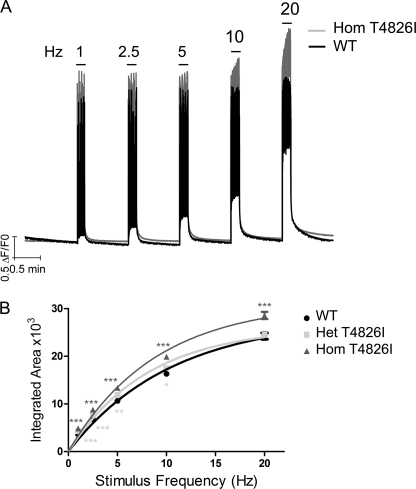FIGURE 1.
T4826I knock-in fibers display an enhanced frequency response compared with the WT fibers. Fibers dissociated from WT-RYR1, Het T4826I-RYR1, or Hom T4826I-RYR1 mice were loaded with Fluo-4 and tested for electrically evoked EC coupling in the Ca2+-replete external buffer ([Ca2+]e = 2 mm). A, representative responses of FDB to electrical pulse trains applied at 1–20 Hz for a 10-s duration isolated from WT (black trace) and Hom T4826I-RYR1 (gray trace) mice. For clarity, the Het T4826I-RYR1 trace is not superimposed on the traces. B, summary data for all three genotypes relating integrated areas of the Ca2+ transient at each stimulus frequency. WT-RYR1 results are mean data ± S.E. from n = 162 fibers from five animals; Het results are from n = 180 fibers from three animals, and Hom results are from n = 203 fibers from four animals. ***, p < 0.001 compared with WT. **, p < 0.01 compared with WT. *, p < 0.05 compared with WT.

